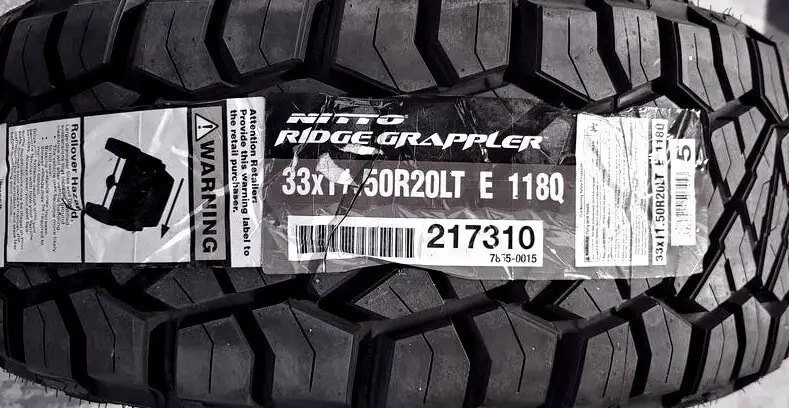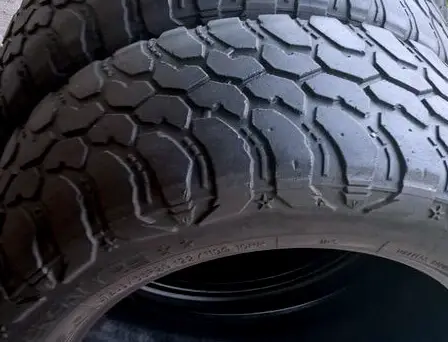Tire Size 33×11.50r20 in Metric

Have you ever taken a moment to consider the seemingly cryptic numbers and letters inscribed on your vehicle’s tires? More specifically, have you ever pondered the meaning of a tire size such as 33×11.50r20?
Though it might appear as an indecipherable code, each character actually conveys critical information about the tire’s size and capabilities. Let’s dive in and decode this mystery.
Dimension Breakdown
The tire size ’33×11.50r20′ is a typical example of a flotation tire size used predominantly for light trucks and SUVs. Each component of this size offers specific information about the tire.
- ’33’ indicates the overall diameter of the tire in inches when it’s fully inflated and not under load.
- ‘11.50’ refers to the tire’s width in inches, measured from sidewall to sidewall.
- ‘R’ denotes a radial tire construction, where the tire’s ply cords extend from the beads and across the tread.
- ’20’ signifies the wheel diameter in inches, which is the size of the wheel the tire is intended to fit.
33×11.50r20 in inches
| Feature | Metric |
|---|---|
| Tire Diameter | 33.0″ |
| Section Width | 11.5″ |
| Rim Width Range | 20″ x 8-10.5″ |
| Sidewall Height | 6.5″ |
| Circumference | 103.6″ |
| Revs/Mile | 611 |
Conversion Process
Let’s see how we can convert this tire size from inches to millimeters.
- Overall Diameter: The overall diameter is 33 inches. Since 1 inch equals 25.4 mm, the overall diameter in millimeters is 33 inches * 25.4 mm/inch = 838.2 mm.
- Tire Width: The tire width is 11.50 inches. Converting this to millimeters gives us 11.50 inches * 25.4 mm/inch = 292.1 mm.
- Wheel Diameter: The wheel diameter is 20 inches. Therefore, the wheel diameter in millimeters is 20 inches * 25.4 mm/inch = 508.0 mm.
- Sidewall Height: To calculate the sidewall height, subtract the wheel diameter from the overall diameter and divide by 2 (since the sidewall height is present on both the top and bottom of the wheel). So, (33 – 20) / 2 = 6.5 inches, which equals 165.1 mm.
- Aspect Ratio: The aspect ratio isn’t directly mentioned in a flotation size like 33×11.50r20. But, it can be calculated by dividing the sidewall height by the tire width and multiplying by 100. So, (6.5 / 11.50) * 100 = 57%.
Finding a Close Metric Equivalent
To find a close metric equivalent of a flotation tire size, you must match the overall diameter and width as closely as possible. The tire measurement displayed as 33×11.50r20 can be loosely translated into metric terms as 292/57r20, but it should be highlighted that this specific size is seldom available in commercial outlets.
A more frequently encountered metric measurement, and the most similar equivalent, is 295/60r20. It has an overall diameter of approximately 834 mm and a width of 295 mm, close to our converted measurements.

Practical Applications
The 33×11.50r20 tire size is especially favored by off-road enthusiasts and drivers of larger vehicles, like SUVs and pickup trucks. These tires provide greater ground clearance, enabling vehicles to handle rocky terrains and deep snow more effectively. They’re also popular for their aesthetic appeal, giving vehicles a more rugged and aggressive look.
How Tall Are 33×11.50r20 Tire Size?
The height of a 33×11.50R20 tire is 33 inches. In millimeters, this height translates to approximately 838.2 mm. This figure is derived from the conversion rate of 1 inch being roughly equal to 25.4 mm (33 inches * 25.4 mm/inch = 838.2 mm).
How Wide Is A 33×11.50r20 Tire?
The width of a 33×11.50R20 tire is 11.50 inches. In millimeters, this width is approximately 292.1 mm. This is based on the same conversion rate (11.50 inches * 25.4 mm/inch = 292.1 mm).
What Size Rim Fits 33×11.50r20?
The number after the “R” in the tire size denotes the rim diameter that fits that tire. Therefore, a 33×11.50R20 tire fits a 20-inch diameter rim. In millimeters, this is approximately 508 mm (20 inches * 25.4 mm/inch = 508 mm).
Summary
Understanding tire sizes, such as the 33×11.50r20, allows you to make informed decisions about the best tires for your vehicle. By breaking down the dimensions, converting them into the metric system, and identifying a close metric equivalent, we can decipher the meaning behind the complex code.
As we’ve seen, this knowledge has practical applications, from selecting tires for off-roading adventures to enhancing the appearance of your vehicle. By demystifying the language of tire sizes, we empower ourselves to understand our vehicles better, making us more competent and confident drivers. After all, knowledge is power, and in this case, it can also mean a smoother, safer ride.

Meet Caitlin McCormack, a Tire Size Expert and Blogger Passionate About Everything Related to Tires. With Years of Experience in the Tire Industry, Caitlin Has Become an Expert in Tire Sizes and Their Impact on Vehicle Performance.
